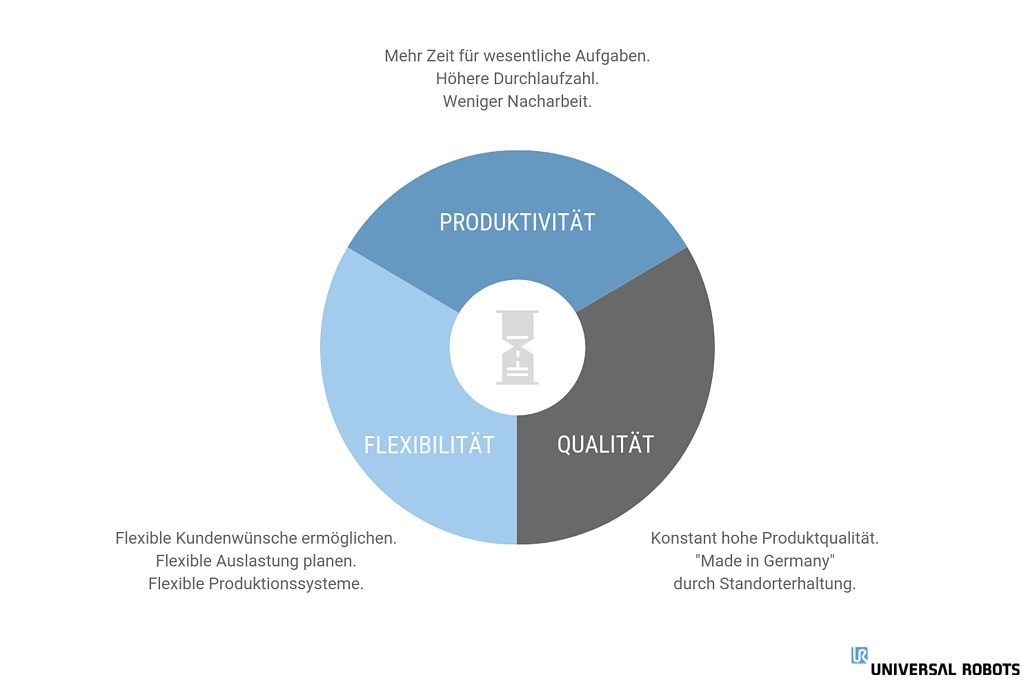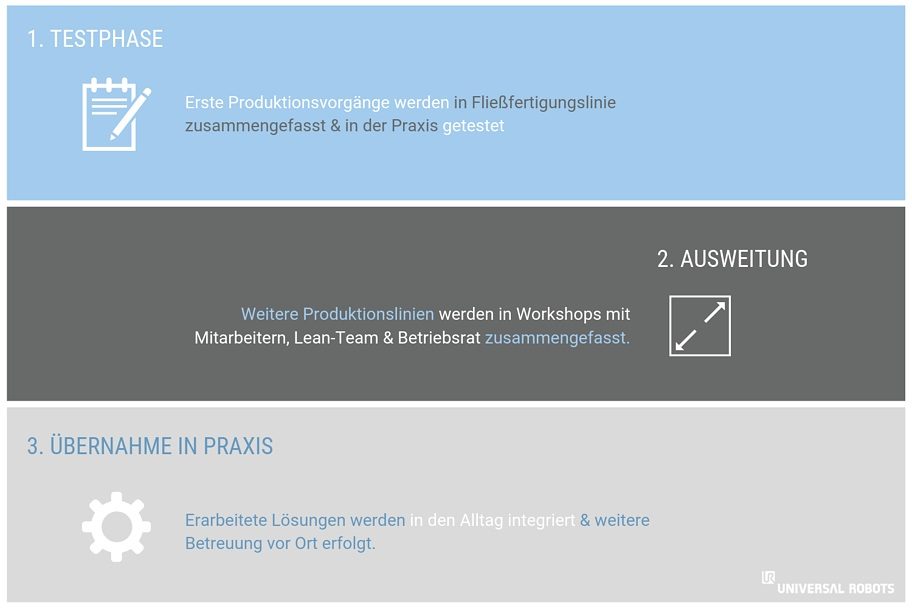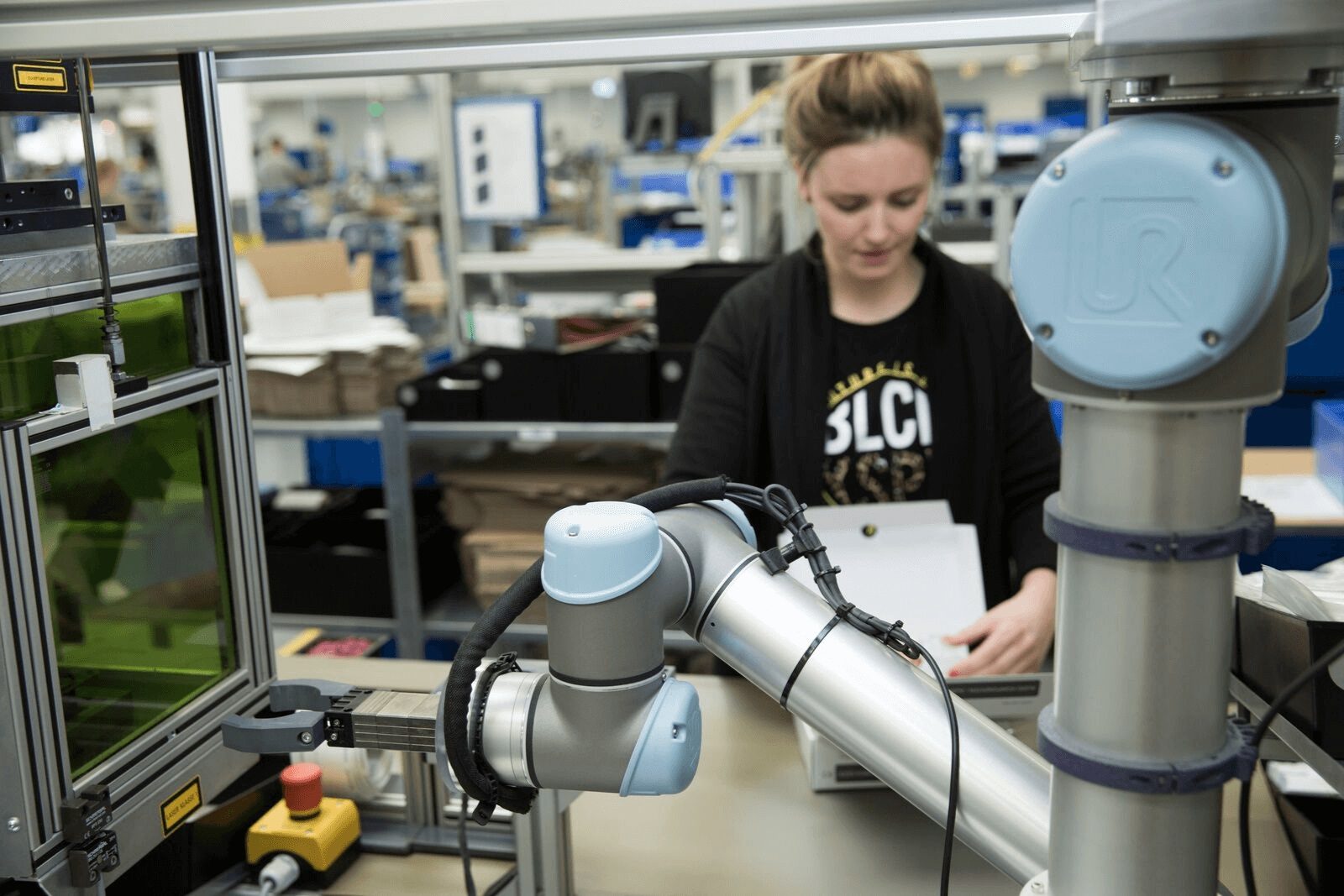For many, it is a utopian idea to be able to deploy only as much time, only as much staff and only as much material as necessary and to constantly adapt requirements to any changes in the market. However, this does not have to remain a utopian idea. It is actually possible with lean production. The idea behind lean production is to produce new goods without waste of any kind. The unnecessary consumption of all resources, such as time, money and raw materials, should be minimized. Such waste occurs in particular with scrap material, transportation routes or necessary rework and causes high costs.
We will now take a look at the benefits of lean production for companies and what is important when implementing it in practice.
What are the benefits of lean production?
Lean production means "lean production". In such production, everything unnecessary is dispensed with. Productivity, product quality and flexibility play a major role here. Each of these three points is important and influences the other two points.
For example, you have more time for important tasks if you combine the same or similar production processes. If you plan your machine or employee capacities flexibly, you can increase the throughput rate. This in turn allows you to respond to customers much more flexibly. Short-term and small batch sizes are suddenly possible.

This interaction can be seen in many different applications. At the same time, everything results in cost savings. The introduction of lean production can safeguard Switzerland as a production location and ensure the high quality of "Swiss Made".
How do you convert your production to lean production?
Using the example of Albrecht Jung GmbH, a specialist in electrical installation and building technology, we can show you the process of converting to lean production.
The company introduced lean production back in the early 2000s. Even today, they are still benefiting from the measures implemented back then. This means that new developments are constantly possible.
Production Manager Mario Schäfer is responsible for the ongoing implementation of lean production at the company. The company has made a change of perspective - away from product focus and towards process optimization. This means that identical or at least similar processes are now combined, completely independently of the product to be manufactured. Since then, this consolidation into a flow production line has formed the basis for the company's focus on lean production. Mario Schäfer put together his own lean team to identify such processes and reorganize production accordingly.

For each production line, the employees work together with the works council and the lean team in a three-step workshop lasting approximately one week to convert their line to lean production:
1. build understanding
In the first part, the lean team explains lean production to the employees. It becomes clear that a leaner approach does not mean cutting jobs, but rather reducing unnecessary steps. This frees up more time for more important tasks. In this step, the employees also look at the material side of lean production. This is in line with Mario Schäfer's motto: "It doesn't take a whole tree trunk to make a toothpick."
Building understanding involves another important step. Employees have the opportunity to develop their own concrete suggestions for streamlining production in dialog with the lean team. Mario Schäfer agrees that this point is very important: "Inductive learning also means taking the time to allow employees to try things out for themselves, develop solutions and fully understand the topic."
2. balancing
The proposed solutions must of course be tested and refined. This is done in this step. The ideas are checked for practicability on the basis of a fixture construction with production-specific fixtures, devices and apparatus. In the line balancing, it is then also determined which work steps are to be carried out at which workstations. These tests are carried out until the optimum solution is found. The solution is then put into practice in production.
3. keep it running
For optimum success and a high level of acceptance among employees, it is important to stay in contact with them: "Continuity is the key to gaining the trust of employees," says Mario Schäfer. "Particularly the little things that are unclear are potential stumbling blocks that can eradicate acceptance of the new."
For this reason, there are always contact persons on site to answer any questions.
The consequences of lean production
Thanks to the step into lean production, constant optimization processes are no problem for the workforce. Employees who have been with the company for a long time recognize the added value of willingness to change through the visibility of the clear advantages of the lean philosophy. But this philosophy is not a problem for new employees either, as they have usually grown up with optimization and expect the lean philosophy as soon as they join the company.
This openness on the part of all employees provides a good basis for further optimization steps.
Following the introduction of lean production, eight collaborative robots from Universal Robots are now in use. They perform many different tasks, such as screwing, gripping, placing and assembling. The processed materials are then further processed by employees who can work directly next to the robots.
Because the precision and repeatability of cobots are so high, rework and production waste are significantly minimized. In addition, the workload is reduced for employees, who can now carry out more important tasks.
According to Mario Schäfer, the implementation was an important step towards streamlining production at the company.
"I used to have to fasten the screws by hand. That was often a fiddly job, because they are quite small - sometimes I slipped. Thanks to the UR3 cobot, the work has become safer for me. I also save valuable time per work step - and can therefore assemble many more parts."
The openness to innovation can be attributed to two important factors in particular. Firstly, the lean processes have proven themselves in practice, which has left a good feeling among employees. And secondly, this openness is due to the good preparatory work, in which the understanding of these processes was promoted.
Lean production is the foundation for success
According to Mario Schäfer, there are three important factors for successfully optimizing processes:
- There must be support from the company management. It accompanies the change, provides support and makes the necessary resources available.
- The lean team must beinterdisciplinary, have a hands-on mentality and have decision-making powers so that short-term measures can be implemented quickly.
- The workshop should always be held on site and the works council should be involved.
The step towards lean production has more than paid off for Albrecht JUNG GmbH. The result is the flow production lines, which ensure an optimized way of working. This is also appreciated by the employees, who now have more time for better tasks with less risk of injury. The cobots also play their part with their high precision and repeat accuracy, as this minimizes rework and material waste.
All these optimizations have improved the company's profitability. This is why Mario Schäfer is also planning to use more cobots.
